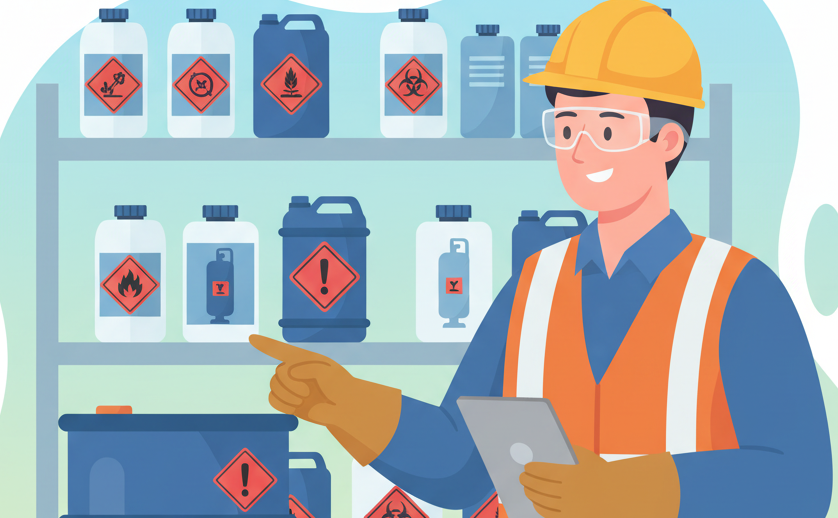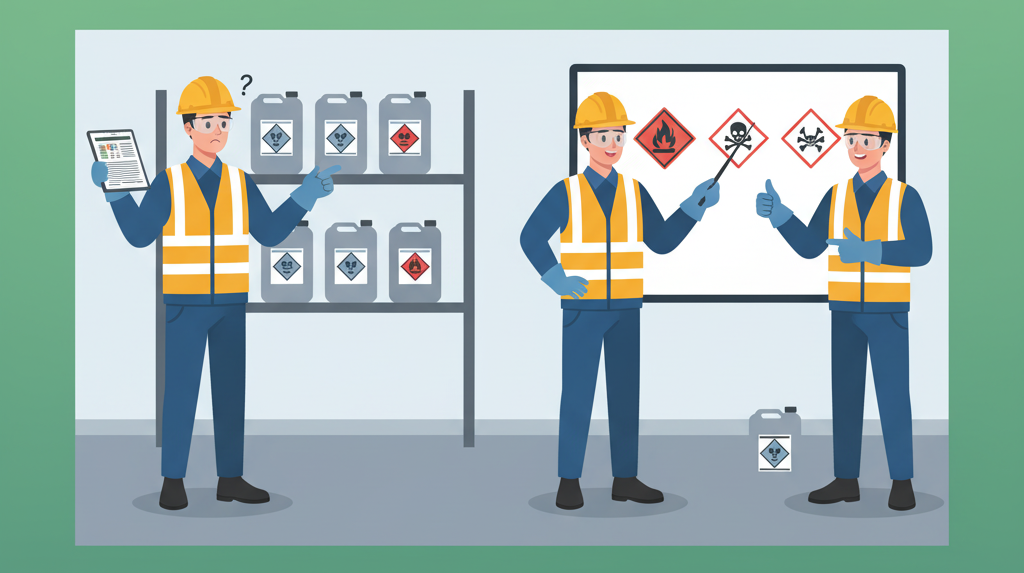About the GHS
GHS, also known as the Globally Harmonized System of Classification and Labelling of Chemicals, is an international regulation standard of hazardous chemicals.
GHS was created with the purpose of replacing the multitude of chemical classification systems that exist all over the world. Each country’s system is a bit different, requiring its own classification, labeling schemes, and safety data sheets. In other words, two countries may label the same product differently. Also, some countries have different regulatory authorities for different sectors, leading to further inconsistencies.
Unfortunately, inconsistent classification leads to inconsistent protection for individuals who might come in contact with hazardous chemicals. Also, chemical producers might have a hard time following these extensive regulations. For instance, the U.S. has a different labeling system for different sectors — for the Occupational Safety and Health Administration, Consumer Product Safety Commission, Environmental Protection Agency, even the Department of Transportation.
A team of experts got together to create GHS to replace the obviously faulty existing system. By analyzing all available data, the GHS strives to define, classify, and compare chemicals and their properties. In addition, they communicate such information by creating labels, safety data sheets, all with the purpose of protecting those who might be exposed to dangerous chemicals.
GHS’s Importance
As we all know, chemicals are all around us — they’re in our food, water, and everything else we might ingest or simply interact with. Chemicals are also crucial for our health, as well as the health of our environment. Besides that, every economic sector utilizes chemicals in one way or another (agriculture, transport, industry, etc.). According to the Occupational Safety & Health Administration (OSHA):
- the global chemical business is an enterprise worth more than $1.7 trillion per year;
- the U.S. chemical industry is worth $450 billion, and its exports are bigger than $80 billion per year.
Obviously, we have to manage and use these chemicals safely and protect ourselves and our environment. In order to do that, we are in need of an extensive and universal classification that will provide necessary information on each chemical, as well as recommended control measures. And the GHS is meant to do just that.
GHS Development
Creating a global standard of hazardous chemicals classification took more than a decade of hard work. It involved experts in all relevant fields, from toxicologists to fire protection engineers and many others. Thanks to the goodwill of these individuals, as well as the cooperation between various countries, stakeholder organizations, and the International Labor Organization, existing systems were collected and reviewed.
The ILO determined that there were four major systems that would serve as a basis for the GHS. However, none of these systems covered all aspects of hazardous chemical classification. To supplement them, parts of other systems were selected and added to the draft. After they collected all the source data, experts harmonized the data into a universal, all-encompassing standard, which we now know as the GHS. This data comes not only from multiple tests and studies but also from literature and practical experience.
Hazard Classification
The most important step in creating an international standard for health and environmental hazards is designing a consistent classification system. Such a system would help provide people with crucial information about dangerous chemicals, regardless of their location or language.
For a company to determine which label and category to use for a specific hazardous product, we suggest that they refer to the GHS document. In it, they can find decision trees that will guide them to the proper hazard category for each product. For most hazardous substances, the procedure consists of the following three steps:
- Collecting the data needed to determine the hazard level of a particular substance;
- Reviewing the collected data and determining the potential dangers of the substance;
- Comparing the collected data with the hazard classification criteria and classifying the substance according to the comparison results.
However, some hazard criteria aren’t so definitive, using more descriptive classification. In that case, we recommend employing an expert to provide a more precise interpretation.
Physical, Health, and Environmental Hazards
The GHS has singled out three major categories of hazardous chemicals — physical, health, and environmental.
In designing this classification, they analyzed all the existing classification systems, trying to find similarities and come up with a universal approach. In some cases, the different classification systems used similar methods, and combining them was relatively easy. On the other hand, some cases needed a compromise solution, since many different methods were used.
After reviewing all the other health and environmental classification systems, the GHS came up with the following universal classification system:
Physical Hazards
- Explosives
- Chemical gases
- Aerosols; chemicals under pressure
- Oxidizing gases
- Gases under pressure
- Flammable liquids
- Flammable solids
- Self-reactive substances and mixtures
- Pyrophoric liquids
- Pyrophoric solids
- Self-heating substances and mixtures
- Substances and mixtures that emit flammable gases in contact with water
- Oxidizing liquids
- Oxidizing solids
- Organic peroxides
- Corrosive to metals
- Desensitized explosives
Health Hazards
- Acute toxicity
- Skin corrosion/irritation
- Serious eye damage/irritation
- Respiratory/skin sensitization
- Germ cell mutagenicity
- Carcinogenicity
- Reproductive toxicity
- Specific target organ toxicity (single exposure)
- Specific target organ toxicity (repeated exposure)
- Aspiration hazard
Environmental Hazards
- Hazardous to the aquatic environment
- Hazardous to the ozone layer
Hazard Communication
To ensure consistency and transparency in their classification, the GHS developed a system of pictograms. We like the fact that all their pictograms are simple, informative, and easy to understand. In addition, the pictograms are usually supplemented with written labels explaining the hazard in detail.
For example, emergency responders should know exactly what precautions they need to take in case of an accident involving dangerous materials. The pictograms will give them a basic idea of what they’re dealing with (fire hazard, a toxic substance, etc.). Also, labels contain important details that can help them act accordingly.
The GHS uses the following nine pictograms to display various dangerous materials:
- Flame (flammable materials)
- Flame Over Circle (oxidants)
- Exploding Bomb (explosives and self-reactives)
- Corrosion (causes metal, skin, and eye corrosion)
- Gas Cylinder (pressurized gases)
- Skull and Crossbones (acute lethal toxicity)
- Exclamation Mark (irritants, narcotics, harmful toxins, etc.)
- Environment (aquatic toxicity)
- Health Hazard (carcinogens, toxins, mutagens)
Importance of the GHS
The GHS provides universal information about hazardous chemicals and gives clear instructions to ensure effective and reliable handling. It bridges the differences in dangerous chemical classification across countries and even makes international transport easier.
That reflects on businesses and governments equally, lowering the costs and labor involved with shipping fuel, reactants, medical supplies, and much more. Consequently, end-users see those benefits in reduced product costs.
In addition, we believe that the global standardization of safety procedures plays a major role in reducing the risks that accompany the handling and the transport of hazardous materials.












